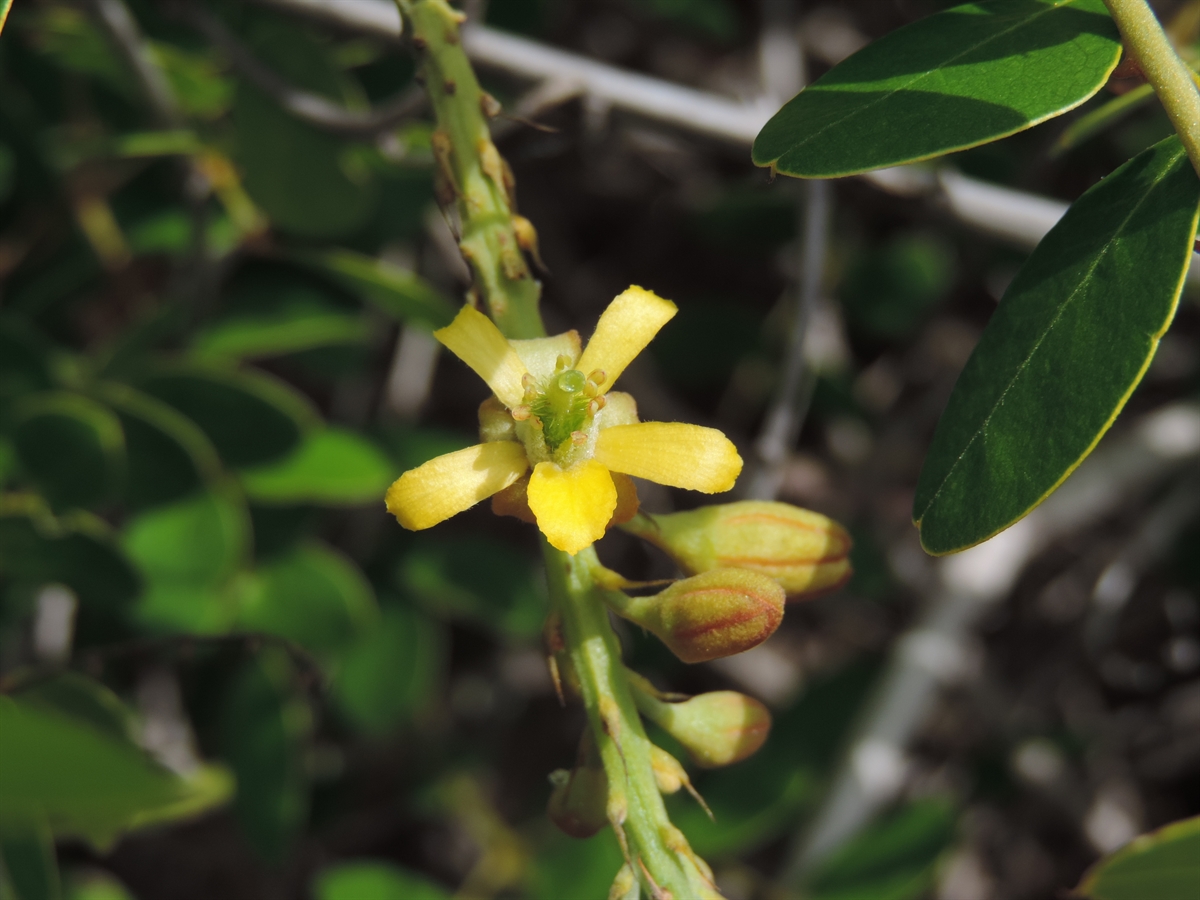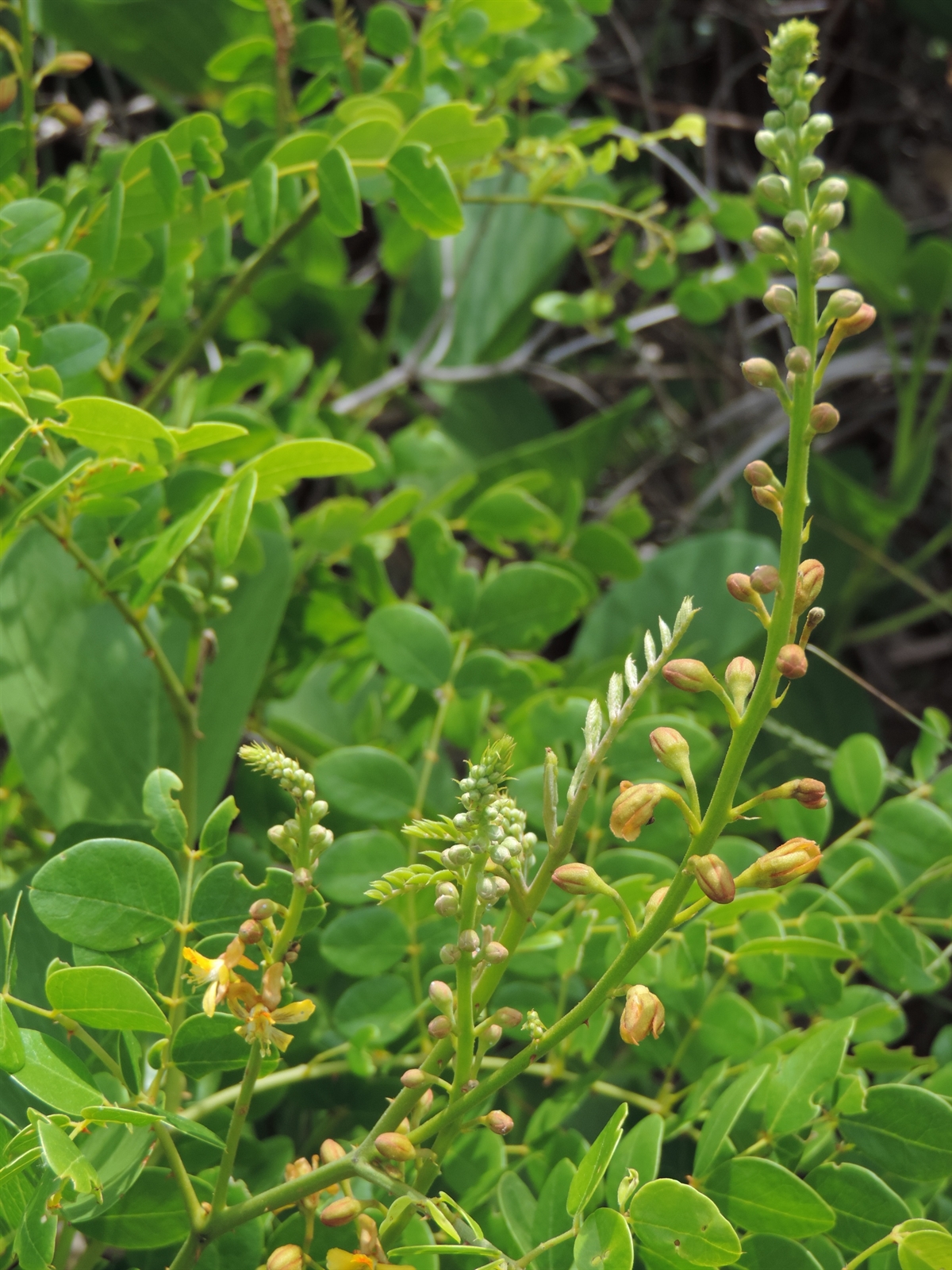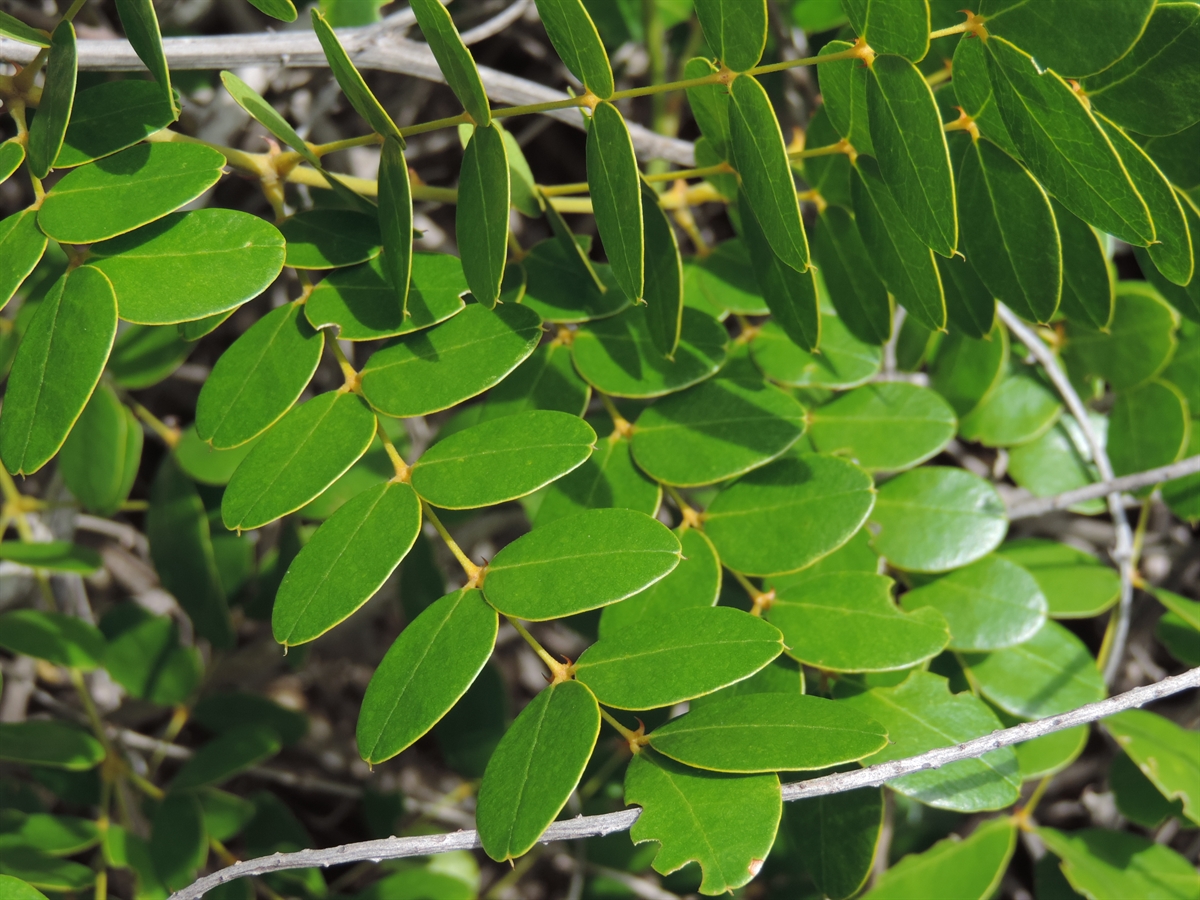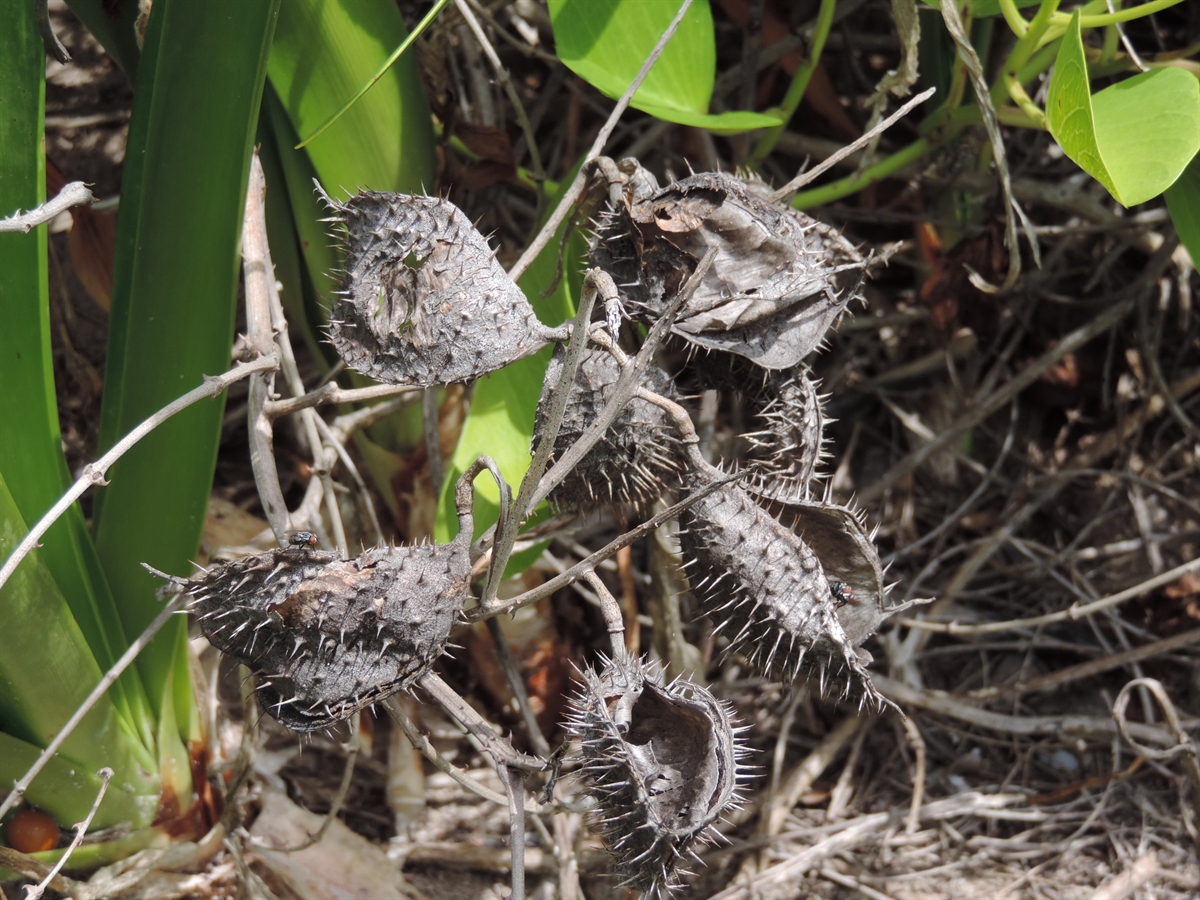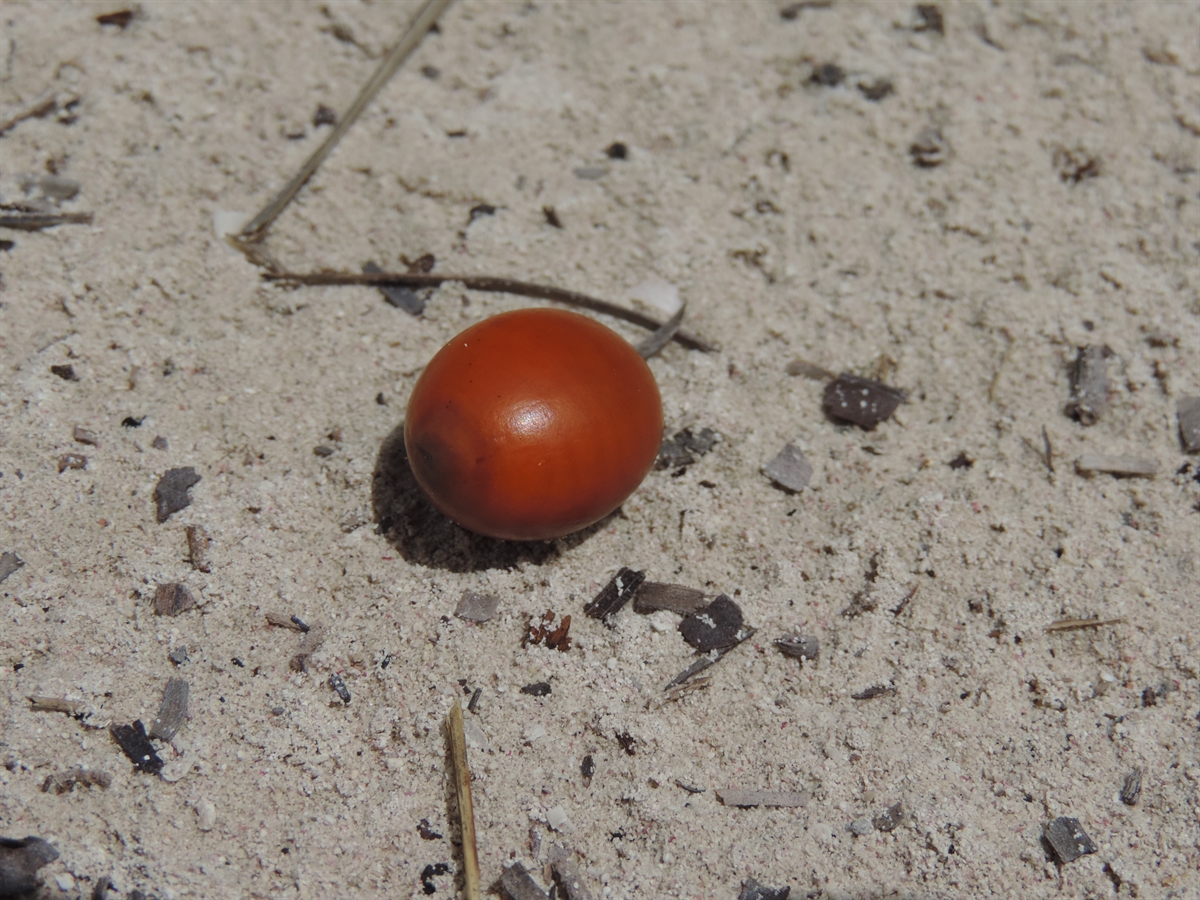Habit: Guilandina ciliata grows as a large vine tree up to 7 meters in height climbing over other vegetation and forming large impenetrable clumps. The stems and leaves are covered with recurved prickles. There are no stipules. The leaves are arranged alternately, pinnately compound, to 35 cm in length with the pinnae in 5-8 pairs each with 4-8 leaflets. The leaflets are ovate/oval/round with a mucronate/retuse leaf apex and entire margin.
The complete, perfect, slightly zygomorphic flowers are arranged in racemes. There are 5 unfused greenish-yellow, tomentose sepals in the calyx and 5 unfused yellow petals in the corolla. There are 10 stamens (8 functional and 2 staminodes) that are the same length as the perianth. The superior ovary has as single locule. The fruit is a spiny legume, 5-8 cm in length, turning brown at maturity. There are 2-3 yellow seeds.
Habitat: Guilandina ciliata grows in Human Altered environments as well as coastal regions near Dunes.
Distribution: Guilandina ciliata grows throughout all islands in the Lucayan Archipelago and throughout the Caribbean region.
Medicinal/Cultural/Economic usage: Guilandina ciliata has no known medicinal uses in the Lucayan Archipelago.
